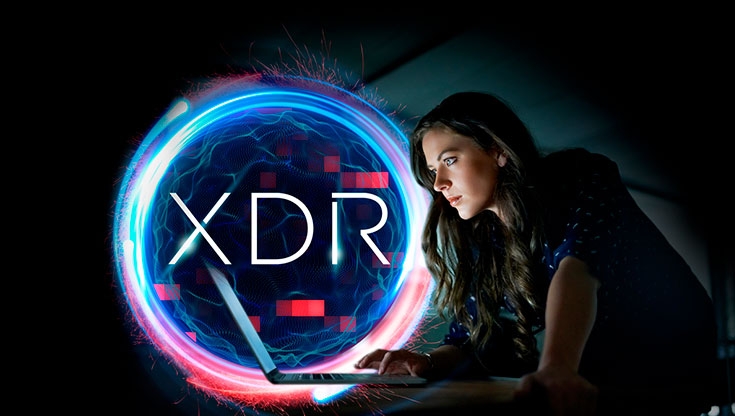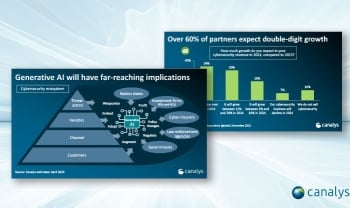What is the difference between XDR and SIEM?

Over the past twenty years, security information and event management (SIEM) platforms have been one of the key solutions for cybersecurity management, as they help security teams centralize attack and threat detection activities. The cybersecurity industry is now shifting towards a new type of solution known as extended detection and response (XDR).
As the two technologies are similar and have overlapping capabilities, many people still don’t know how they differ. However, choosing the right solution is critical to building an effective and sustainable security architecture that supports the needs customers require from MSPs.
Key differences between XDR and SIEM
The crucial difference between XDR and SIEM is that the latter adopts a more general approach that makes it less effective than XDR platforms, which are highly specialized in correlating security information and can detect attacks and threats with considerably less effort. SIEM tools enable organizations to collect logs and alerts from multiple solutions. However, this technology does not include analytics or automation, unlike XDR which incorporates EDR and MDR elements, forming an end-to-end solution that enhances detection and response. XDR uses the data collected from SIEM to provide a more manageable level of alerts and data, making it the ideal complement to SIEM technology.
Moreover, you could say that XDR offers an alternative to traditional reactive approaches that provide layered visibility into attacks, such as EDR, NDR and User Behavior Analysis (UBA) or even SIEM. It is capable of implementing response actions by obtaining data from different sources, correlating and classifying them automatically to generate a detection. Once a threat has been detected it is awarded a criticality score based on which a specific action is performed, which can also be programmed to be carried out afterwards, or in the future whenever a situation that meets those same criteria occurs. In comparison, SIEM is passive and informs users by generating alerts that must be managed by qualified personnel.
The following four points highlight the key differences between the two solutions:
1. Objective:
Most SIEM solutions provide centralized log management and analysis capabilities for an organization. This involves generating alerts, correlating data from multiple selected solutions, and enabling post-event analysis. SIEM can also be used for compliance monitoring, containment, and more comprehensive reporting.
XDR focuses on using the data it collects to improve threat detection and response. Its goal is to identify, investigate and take appropriate action to resolve incidents quickly and efficiently.
2. Management complexity:
As they are more open, SIEM solutions often require substantial management effort to connect them to data sources, correlate events and configure alerts. Given the amount of information they handle for centralized visibility, they produce a large volume of individual alerts that are difficult to classify and prioritize.
In contrast, XDR solutions are designed to integrate more easily into a company's security architecture. The advantage this delivers is that it reduces the number of relevant alerts, which may otherwise be overlooked. By deploying automatic correlation of data from different security layers alerts can be confirmed automatically, thus reducing the time security analysts need to evaluate alerts and risks and decide what needs attention and further investigation. In addition, centralized configuration, which generates alert weighting, helps prioritize which actions need to be taken. XDR also requires fewer training hours and delivers unified management and workflow experience across multiple security components.
3. Data storage:
While SIEM solutions act as a central data repository for security companies like MSPs and enable long-term storage, XDR typically accesses data from other sources, which it stores at temporarily solely for analysis purposes.
4. Responsiveness:
Although most current SIEMs also have some response capabilities, they are, in principle, a data analysis tool that can provide MSPs with the data and alerts needed to identify the threats attacking an organization. XDR extends these capabilities and can support and coordinate response efforts within the same solution.
How can MSPs guide their customers to choose the solutions that best suit their needs?
MSPs need leverage as they compete to meet their customers’ changing security requirements. By adding solutions such as XDR and SIEM to their offering, they can help organizations strengthen their security while improving their own operational efficiency. However, to add value through these solutions, they must be able to guide their customers and recommend the best fit for their needs.
SIEM can be a useful tool if the customer has the time and resources to dedicate to it. For instance, if the company has compliance and operational risk management requirements, in addition to threat detection, they may require SIEM to meet those broader reporting and data collection demands.
If the company already uses a SIEM solution, it is advisable to incorporate an XDR solution to complement and amplify the team’s response capabilities.
The main challenge SIEM poses is alert fatigue. These solutions generate a large number of alerts, including false positives, so if the customer has a small team, having to classify and investigate all of them can become overwhelming. As it’s a broader and more complex solution, the costs are higher, which more moderate-sized companies may not be able to afford.
XDR is ideal for small to medium-sizedmidsize companies, as it saves resources, time and costs. But it is important to emphasize that it is a more specialized solution, while SIEM is broader and can correlate more disparate data including other solutions beyond the firewall and endpoints such as proxy or application logs. Nonetheless, automation eliminates much of the work required by a SIEM solution and this technology does not require such a high level of specialization from the team, which is welcome, given the current shortage of specialized cybersecurity talent. To some extent, an XDR solution like WatchGuard's ThreatSync solves some of the main challenges posed by SIEM solutions, but ultimately, it will all come down to the individual customer's capabilities and situation.
If you would like to find out more about this technology, access WatchGuard's XDR world and discover how ThreatSync can help you unleash the power of unified security. If you're still curious about what other benefits XDR and a SIEM solution deliver, feel free to check out this post:


